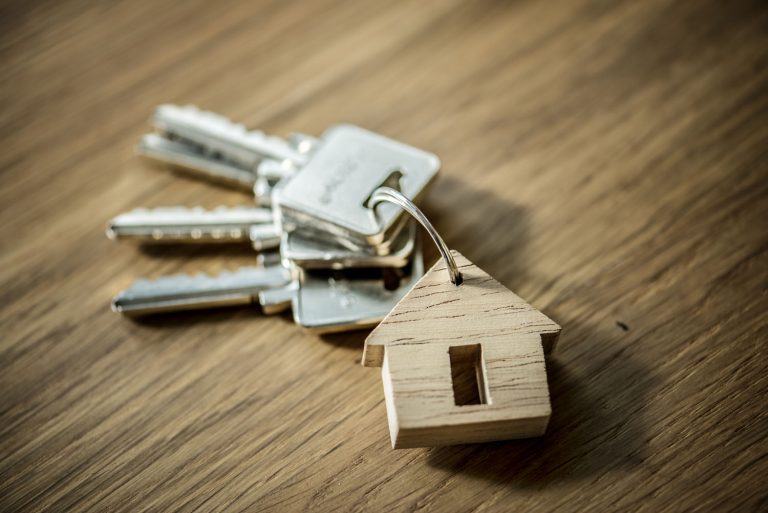Divorce is often ranked among life’s most challenging and emotionally taxing experiences. It involves significant emotional upheaval, legal complexities, and major lifestyle changes. When a couple shares a home, the process becomes even more complicated. Selling a house after divorce is not just a financial decision; it carries profound emotional and logistical considerations. For many, the family home represents years of memories, personal milestones, and stability, making the prospect of selling it simultaneously freeing and deeply stressful.
Understanding your options, preparing for the challenges ahead, and knowing how to navigate both the financial and emotional aspects of the sale are essential for minimizing stress and achieving a fair outcome. Whether you are seeking a traditional sale, a buyout of your ex-partner’s share, or a faster, more straightforward solution, knowing the full spectrum of possibilities empowers you to make confident decisions.
In this comprehensive guide, we will explore why selling a house after divorce can be stressful, outline the various options available, and provide insights into strategies for reducing emotional and financial strain. This is particularly useful for homeowners who want to move forward quickly, retain as much equity as possible, and regain control over their next chapter.
Part 1: Understanding the Options When Selling a House After Divorce
When a property is shared between spouses or partners, the question of what to do with it after a divorce can be complicated. Each choice comes with its own advantages, challenges, and implications, both financially and emotionally.
1. Selling the Property and Splitting the Proceeds
One of the most common approaches is to sell the home and divide the proceeds. This method allows both parties to:
- Access Equity: By selling the property, each person can take a fair share of the accumulated equity. This can provide a financial foundation for moving forward independently.
- Avoid Ongoing Responsibility: Selling eliminates the need for one party to continue covering mortgage payments, taxes, insurance, and maintenance costs.
- Simplify Legal Settlements: Selling prior to finalizing other asset divisions can streamline the overall divorce settlement.
However, this approach requires cooperation and agreement on key aspects, including the listing price, timing of the sale, and allocation of proceeds. Delays in agreement or disagreements over the market value can add stress and prolong the process.
2. One Party Buying Out the Other
Another option is for one party to buy out the other’s share of the property. This allows one person to retain the home while providing the other with their fair share of equity. Considerations include:
- Refinancing the Mortgage: The buying party may need to refinance to remove the ex-spouse from the mortgage, which requires sufficient income and creditworthiness.
- Affordability: It’s crucial to assess whether the home remains affordable for a single income. Rising interest rates or changes in financial circumstances can impact long-term sustainability.
- Equity Evaluation: Accurate valuation of the property is essential to ensure a fair buyout. Independent appraisals are often recommended to prevent disputes.
While this option provides continuity for one party, it may involve additional financial strain and requires careful planning to avoid future stress.
3. Selling Before Finalizing the Divorce
In some cases, it makes sense to sell the property even before the divorce is finalized. Doing so can simplify the division of assets and provide a clear financial starting point for both parties. Benefits include:
- Quick Resolution: A pre-divorce sale allows both parties to move forward without ongoing financial entanglement.
- Avoiding Joint Liability: Selling removes the shared responsibility for mortgage payments, taxes, and maintenance costs, which can reduce conflict.
- Flexibility in Moving Plans: Both parties can use the proceeds to secure new housing, downsize, or start fresh independently.
This approach requires mutual agreement and careful coordination, but for many couples, it reduces long-term complications and facilitates a smoother financial transition.
4. Selling Directly to a Property Buyer
For couples seeking a fast, reliable, and low-stress solution, selling directly to a property-buying company can be a compelling option. These companies purchase homes quickly and as-is, offering several advantages that are particularly beneficial during a divorce:
- Speed of Sale: Transactions can often be completed in a matter of weeks rather than months, helping both parties move on without prolonged uncertainty.
- Certainty and Reliability: Offers are usually guaranteed, reducing the risk of buyers withdrawing or failing to secure financing.
- No Repairs or Renovations Required: Homes are bought as-is, eliminating the stress and financial burden of preparing the property for the traditional market.
- Simplified Division of Equity: Once the property is sold, proceeds can be divided fairly according to agreements, reducing the potential for ongoing disputes.
This approach is especially useful for homeowners dealing with tight timelines, financial pressures, or emotional challenges associated with leaving the family home. By removing the complexities of traditional sales, it provides a clear, controlled pathway to closure.
Key Considerations Before Selling
Before taking action, homeowners should carefully assess the following factors:
- Mortgage and Debt Responsibilities: Both parties remain liable for the mortgage until the property is sold or refinanced. Keeping up with payments is crucial to protect credit scores.
- Legal Documentation: Any agreements regarding the sale, equity split, or buyout should be legally formalized to prevent disputes later.
- Emotional Readiness: Selling the family home can trigger strong emotions. Acknowledging these feelings and seeking support is important for mental well-being.
- Market Timing: Understanding local property market conditions can influence sale price, timeline, and strategy. Consulting with professionals can provide guidance.
Conclusion of Part 1
Selling a house after divorce is complex, involving a blend of financial, legal, and emotional considerations. Homeowners have several options, from selling and splitting the proceeds to buyouts, pre-divorce sales, or fast direct sales. Each choice carries unique benefits and challenges, and understanding these is essential for making informed, stress-reducing decisions.
Part 2: Practical Steps to Navigate Selling a House After Divorce
Selling a house during a divorce is often one of the most challenging aspects of the separation process. Beyond financial considerations, homeowners must deal with emotional strain, legal obligations, and logistical complexities. The good news is that with careful planning and proactive decision-making, the process can be simplified, stress can be minimized, and both parties can achieve a fair outcome.
In this section, we’ll explore practical steps homeowners can take to navigate the sale successfully, from preparation to completion.
1. Communicate Clearly With Your Ex-Partner
Open and honest communication is essential. Divorce often involves heightened emotions, and misunderstandings about the property can create unnecessary conflict and delays.
- Agree on Objectives: Decide whether the goal is a fast sale, maximizing sale price, or one party buying out the other. Clarity early in the process reduces misunderstandings.
- Set Ground Rules for Decisions: Determine how offers will be evaluated, who will communicate with estate agents or buyers, and how major decisions will be handled.
- Maintain Respectful Dialogue: Avoid letting emotional disagreements interfere with financial decisions. Consider using neutral third parties, such as solicitors or mediators, to help facilitate communication.
Effective communication prevents disputes from escalating and ensures the sale proceeds efficiently.
2. Evaluate Financial Position
Understanding the financial landscape is critical before selling:
- Mortgage Status: Determine the outstanding balance and how it will be split. Decide who will pay the mortgage during the sale period.
- Property Value: Obtain an independent valuation or multiple appraisals to understand current market value. This ensures a fair division of equity.
- Costs of Selling: Consider estate agent fees, legal fees, removal costs, and potential repairs. Being aware of these expenses allows both parties to plan realistically.
- Equity Distribution: Clarify how the net proceeds will be divided. Ensure this agreement is documented legally to avoid future disputes.
A clear financial picture helps reduce stress and supports informed decision-making.
3. Prepare the Property for Sale
Even if the goal is a fast sale, preparing the home can improve buyer interest and potentially increase the sale price.
- Declutter and Depersonalize: Remove personal items, excess furniture, and clutter to create a sense of space and allow buyers to envision themselves living in the home.
- Repairs and Maintenance: Address minor repairs, such as leaks or broken fixtures. If using a direct-sale option, repairs may not be necessary, which saves time and money.
- Curb Appeal: First impressions matter. Ensure gardens, pathways, and entryways are tidy and welcoming.
- Professional Presentation: High-quality photos and detailed descriptions improve online listings and attract serious buyers.
These steps reduce the risk of extended marketing periods and repeated viewings, which can be emotionally taxing during a divorce.
4. Consider Selling Directly to a Property Buyer
For homeowners seeking a fast, low-stress option, selling directly to a property buying company can be highly effective:
- Quick Completion: Direct-sale companies often complete purchases within weeks, eliminating months of uncertainty.
- No Repairs Needed: Homes are bought as-is, reducing stress and financial burden.
- Certainty of Sale: Offers are guaranteed, avoiding the disappointment of withdrawn buyers or chain complications.
- Simple Equity Division: Proceeds from a direct sale can be divided quickly and fairly between parties, streamlining the financial settlement.
Direct-sale solutions are particularly helpful when both parties need to move on quickly, or when emotions make traditional negotiations difficult.
5. Legal Considerations
Selling a property during or after a divorce involves legal aspects that cannot be ignored:
- Ownership and Title: Ensure the property ownership and mortgage liabilities are clarified. Joint ownership requires agreement from both parties before sale.
- Divorce Decree or Court Orders: Confirm whether any court orders impact the sale process or division of proceeds.
- Documentation: Ensure all agreements regarding the sale, equity split, or buyout are legally documented. This reduces the risk of future disputes and ensures compliance with divorce settlement terms.
Consulting with a solicitor familiar with divorce property settlements is highly recommended to protect both parties’ interests.
6. Managing Emotional Stress
Divorce is emotionally challenging, and selling the family home can intensify stress. Effective strategies include:
- Focus on the Future: View the sale as a step toward independence and new opportunities rather than a loss.
- Seek Support: Friends, family, and professional advisors can provide guidance, reassurance, and practical help.
- Break the Process into Steps: Handle one stage at a time—valuation, listing, offers, completion—to avoid feeling overwhelmed.
- Stress Management Techniques: Exercise, meditation, and mindfulness can reduce anxiety and improve focus during a high-pressure period.
Managing emotions alongside practical steps ensures the sale proceeds smoothly and with minimal personal strain.
7. Case Study: Fast, Low-Stress Sale After Divorce
Consider a couple who had lived in their family home for over a decade. Following divorce proceedings, they faced:
- Situation: Emotional stress from leaving a home full of memories, financial pressures from maintaining the property, and uncertainty about buyers.
- Action: They chose to sell directly to a property buying company that offered an as-is purchase.
- Outcome: The sale was completed in under four weeks, allowing both parties to divide the proceeds fairly, avoid months of showings and negotiations, and move on without additional emotional strain.
This example illustrates how direct sales can simplify the process, reduce stress, and deliver a timely resolution during a divorce.
Summary of Part 2
Selling a house after divorce can be emotionally and financially challenging, but proactive steps can make the process manageable:
- Communicate clearly with your ex-partner and set agreed objectives.
- Evaluate finances, mortgage obligations, and property value.
- Prepare the property efficiently to maximize appeal.
- Consider fast, direct-sale options to reduce stress and timeline.
- Address legal considerations to protect both parties’ interests.
- Implement strategies to manage emotional stress and maintain focus.
By following these steps, homeowners can regain control, protect equity, and reduce the emotional burden associated with selling a shared property during divorce.
Part 3: Advanced Strategies for a Smooth, Stress-Free Sale
Selling a house after divorce can be a complex and emotionally charged process, but with careful planning and the right strategies, homeowners can simplify the sale, maximize financial outcomes, and reduce stress. This final section explores advanced strategies, practical negotiation tips, and considerations to ensure a smooth, controlled sale.
1. Choosing the Right Sale Method
The method you select to sell your property can dramatically impact the speed, stress, and financial outcome:
- Traditional Market Sale: Listing the property through estate agents allows exposure to multiple buyers but can take months. Delays in negotiations, chains, or buyer financing can increase stress.
- Direct Sale to a Property Buyer: Companies like SELLTO offer a fast, guaranteed purchase without the need for repairs, viewings, or prolonged negotiations. This method is ideal for homeowners seeking certainty, speed, and simplicity during a divorce.
- Hybrid Approaches: Some homeowners may choose a direct-sale offer as a backup while marketing the property traditionally to ensure maximum financial return.
Selecting the right method depends on your priorities—speed, certainty, minimizing stress, or maximizing sale price. Understanding each option helps you plan effectively.
2. Negotiating Fairly and Effectively
Negotiation during a divorce-related property sale requires both financial and emotional awareness:
- Establish Clear Boundaries: Decide on minimum acceptable sale price or buyout terms beforehand. Having predetermined limits prevents prolonged back-and-forth negotiations and reduces stress.
- Separate Emotions From Decisions: Divorce can intensify feelings of resentment or attachment. Focus on facts and market realities rather than letting emotions influence financial decisions.
- Seek Professional Support: Estate agents, solicitors, or property consultants can negotiate on your behalf, providing expertise and reducing personal involvement in potentially stressful discussions.
- Evaluate Offers Holistically: Consider not only the sale price but also speed of completion, certainty of sale, and any conditions attached. A slightly lower offer with guaranteed, fast completion may be preferable to a higher, uncertain offer.
A structured approach to negotiation minimizes conflict, ensures fairness, and accelerates the sale.
3. Maximizing Financial Outcomes
Even in emotionally challenging circumstances, it’s important to protect your financial interests:
- Consider Timing: Market conditions can impact sale price. Listing strategically may maximize proceeds, although in some cases, speed is more important than peak pricing.
- Reduce Selling Costs: Opting for direct sale can eliminate estate agent fees and reduce repair costs, increasing net proceeds.
- Assess Tax Implications: Understand any capital gains tax or legal costs involved, especially if the property has been jointly owned for years. Professional advice ensures you retain as much equity as possible.
- Evaluate Offers Carefully: Multiple offers should be compared in terms of both financial return and certainty of completion, particularly when emotions are high.
Balancing financial priorities with emotional needs is key to achieving a fair and manageable outcome.
4. Ensuring Smooth Legal and Logistical Completion
Divorce-related sales involve additional legal considerations, and smooth completion reduces stress:
- Document Agreements Clearly: Ensure all arrangements regarding the sale, equity split, or buyout are legally formalized to prevent disputes.
- Coordinate Timing: Agree on key dates such as completion and move-out schedules to minimize disruption and conflict.
- Professional Guidance: Engage solicitors experienced in divorce property sales to manage paperwork efficiently and resolve potential complications quickly.
- Clear Communication: Maintain open lines of communication with all parties—ex-spouse, solicitors, buyers—to avoid misunderstandings that can delay the sale.
Proper legal and logistical management ensures the sale is completed efficiently, avoiding the stress of unexpected complications.
5. Managing Emotional Well-Being During the Sale
Selling a home after divorce can evoke strong emotions. Maintaining mental well-being is critical:
- Break the Process into Steps: Focus on one stage at a time—valuation, offers, completion—to avoid feeling overwhelmed.
- Support Systems: Friends, family, or professional advisors can provide guidance and reassurance.
- Stress Management: Exercise, mindfulness, and relaxation techniques help maintain clarity and composure during negotiations and decision-making.
- Maintain Perspective: View the sale as a pathway to independence and a fresh start rather than a loss.
Balancing emotional health with practical decision-making ensures a smoother, less stressful experience.
6. Case Study: Successful Fast Sale During Divorce
Consider a couple who had shared a family home for over a decade. Following divorce proceedings:
- Situation: The homeowners faced emotional stress, financial pressure from maintaining the property, and uncertainty about buyers in the traditional market.
- Action: They chose to sell directly to a property buying company that purchased the home as-is.
- Outcome: The sale was completed within three weeks, the proceeds were divided fairly, and both parties were able to move on quickly without prolonged showings, repairs, or negotiations.
This example illustrates how a direct-sale approach can streamline the process, protect equity, and reduce emotional strain, making it ideal for divorce-related property sales.
7. Summary of Part 3
Selling a house after divorce is challenging, but careful strategy and the right approach can make it manageable:
- Choose the sale method that aligns with your priorities—speed, certainty, or financial return.
- Negotiate fairly and separate emotions from financial decisions.
- Maximize financial outcomes by reducing costs, timing the sale wisely, and considering all offers.
- Ensure legal and logistical processes are clear and professionally managed.
- Maintain emotional well-being with structured steps, support systems, and stress management techniques.
For homeowners seeking speed, certainty, and reduced stress, selling directly to a property buying company like SELLTO can be a highly effective solution. It eliminates many traditional challenges while enabling both parties to move forward confidently.
Conclusion: Take Control and Move Forward
Divorce is a major life transition, and selling the family home is one of its most complex elements. By planning carefully, exploring all options, and considering fast-sale solutions, homeowners can simplify the process, protect equity, and reduce emotional strain.
The key to success lies in proactive decision-making, strategic planning, and leveraging solutions that provide certainty and control. With these steps, selling a house after divorce can be transformed from a stressful ordeal into a structured, manageable process, allowing both parties to start the next chapter of their lives with confidence and peace of mind.




